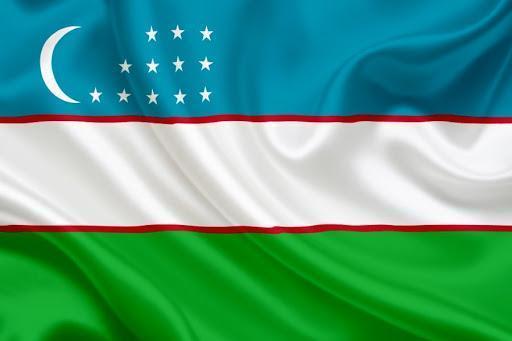State Emblem of the Republic of Uzbekistan
The state emblem of Uzbekistan was formally adopted on July 2, 1992 by the newly established Republic of Uzbekistan. It bears many similarities to the emblem of the previous Uzbek SSR, which Republic of Uzbekistan succeeded.
Like other post-Soviet republics whose symbols do not predate the October Revolution, the current emblem retains some components of the Soviet one. Prior to 1992, Uzbekistan had an emblem similar to all other Soviet Republics, with standard communist emblems and insignia.
The coat of arms displays the natural wealth of the country. On the left there is a cotton plant, which has been immensely important to the country's industry and agriculture since the Soviet era as the Uzbek Soviet Socialist Republic was one of the main producers and supplies of cotton in the entirety of the USSR, thus it is often called the white gold symbolizing its sheer significance.
To the right is a wreath of wheat ears, symbolizing the country's wealth and prosperity. Together, both cotton and wheat plants are intertwined with the ribbon of the state flag, which portrays the peace and consolation of different peoples and ethnic groups living within the republic..
It is surmounted by the blue star of Rub El Hizb with white star and crescent inside, a symbol of Islam, which a majority of Uzbeks profess.
In the center, a right-facing Huma (or Khumo) is displayed with outstretched wings. This legendary bird symbolizes peace, happiness and striving for freedom. Enclosed by the Huma's wings is a depiction of the rising sun over mountains, overlooking green pastures. Two rivers, the Amu Darya and Sir Darya, flow from the mountains and crepuscular rays emanate from the rising sun at the rear of the emblem.
The Khumo is perched on a banner at the base of the cotton and wheat borders which bears the national colors and the name of the country in Latin script (Oʻzbekiston).
State Emblem of the Republic of Uzbekistan
 The state flag of Uzbekistan was approved on November 18, 1991 and since then, it is an official national symbol of the republic.
The state flag of Uzbekistan was approved on November 18, 1991 and since then, it is an official national symbol of the republic.
It represents a multicolored rectangular cloth with three horizontal stripes of blue, white and green. Everything on Uzbek flag is symbolic and reflects the perception of the world of the Uzbek people and has a connection with their historical and cultural past.
The blue stripe on the flag is the symbol of the sky, water, and traditional symbol of peace, as well as the sign of historical continuity (the flag of Amir Temur’s state was also blue in color).
The white line on the cloth is the color of peace in perception of the Uzbek people, which is reflected even in the ordinary Uzbek expression “ok yul!”, which means, “go in peace!”.
The green color on the banner is the color of nature, new life and abundance in countries where the majority of is population are Muslims. Red lines – symbolize the vital energy, New half moon – reflects both the national independence of the republic, and connection with the historical past of the people, its traditions. On the banner, 12 stars are also depicted, symbolizing twelve regions of the country as well as ancient solar calendar.
National Anthem of the Republic of Uzbekistan
National Anthem of the Republic of UzbekistanThe law “On national anthem of the Republic of Uzbekistan” was adopted on the December 10, 1992 at the 11th session of the Supreme Council of Uzbekistan. Poem by A. Aripov and Music by M. Burkhanov.
Serquyosh hur oʻlkam, elga baxt, najot!
Sen oʻzing doʻstlarga yoʻldosh, mehribon!
Yashnagay to abad ilmu fan, ijod,
Shuhrating porlasin toki bor jahon!
Oltin bu vodiylar - jon Oʻzbekiston,
Ajdodlar mardona ruhi senga yor!
Ulugʻ xalq qudrati joʻsh urgan zamon,
Olamni mahliyo aylagan diyor!
Bagʻri keng oʻzbekning oʻchmas iymoni,
Erkin, yosh avlodlar senga zoʻr qanot!
Istiqlol mash’ali, tinchlik posboni,
Haqsevar, ona yurt, mangu boʻl obod!
Oltin bu vodiylar - jon Oʻzbekiston,
Ajdodlar mardona ruhi senga yor!
Ulugʻ xalq qudrati joʻsh urgan zamon,
Olamni mahliyo aylagan diyor!

